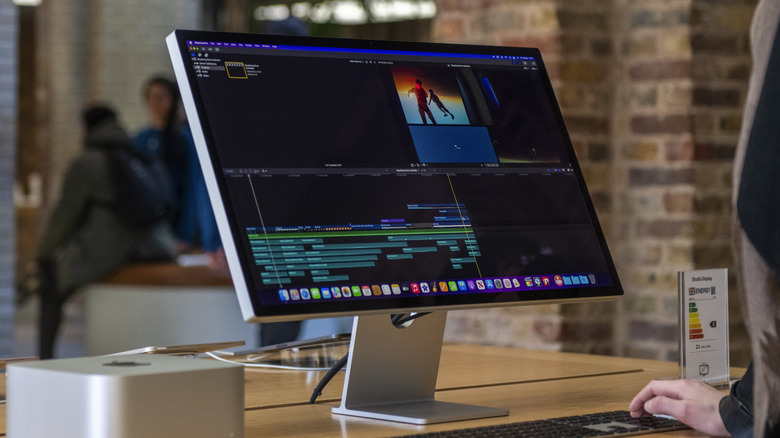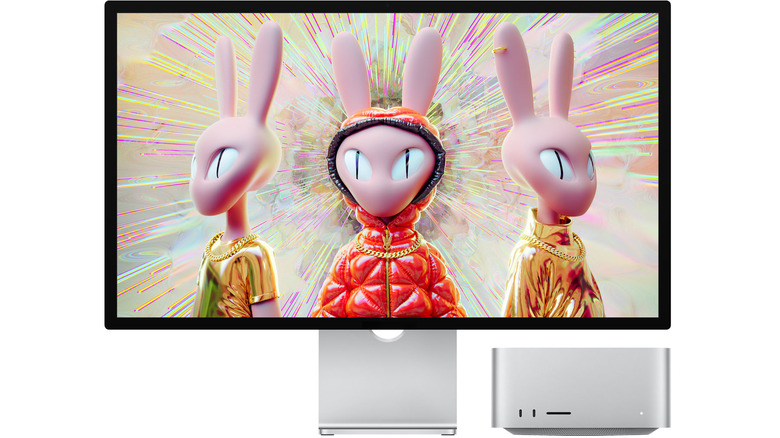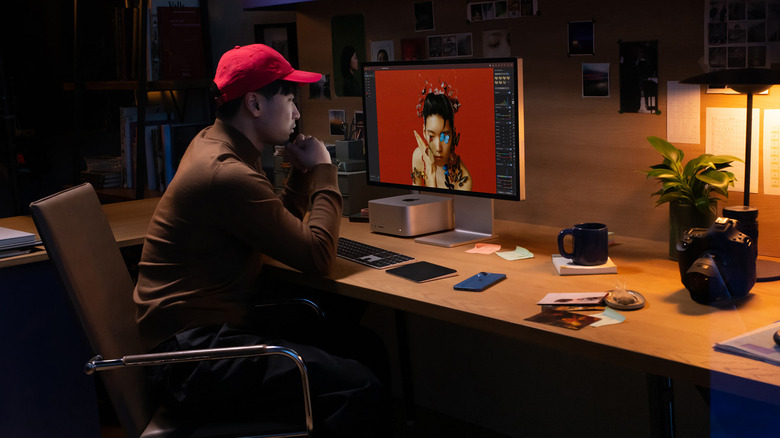Using Apple's Studio Display With A Windows PC Is Bizarrely Difficult
In a somewhat not-so-shocking turn of events, the new Apple Studio Display doesn't seem to play well with Windows PCs. A new post from coder and Test Double co-founder Justin Searls published over the weekend outlines the difficulties he faced when trying to get the new 5K Studio Display to work with his Windows gaming PC. Apple already noted some of the Studio Display's features wouldn't carry over to PCs, so it isn't very surprising to see users already running into roadblocks.
Searls breaks down the different attempts he made to get the display to function properly with the PC, including getting all six of the included speakers to work alongside his rig. The coder was, according to his post, looking forward to using Apple's high-quality display with his gaming machine, though that enthusiasm soured as he struggled to get the system to cooperate. While he did eventually get the PC to work with Apple's monitor, he concluded his post with a question about whether it's worth the effort to use the Studio Display in the long term.
Making the Apple Studio Display work with Windows
Searls says when he tried plugging the display into his NVIDIA RTX 3090 using a Display Port to USB-C cable, nothing happened. At this point, he decided to look into other options. The result was two methods he found that can work – though, he notes, your mileage may vary with each method.
The first technique involves using an "8K" Display Port 1.4 cable connected to a USB-C adapter. Searls points out that you'll need a newer, higher bandwidth cable for this to work, so if the picture doesn't show up the first time you plug in the display, you may want to check the cord to determine whether it's the problem.
The downside to this first method, though, is you won't be able to make use of the included speakers the Studio Display offers.
The next method Searls recommends requires a bit more effort. First, you'll need to get a PCIe Thunderbolt expansion card and install it in your PC. You'll also need an open USB header on your motherboard if you want to make use of the speakers and USB ports included on the display.
Searls breaks down installation instructions for this method in his original post. Because it requires going into your computer's case, it isn't recommended for users who aren't comfortable directly interacting with their PC's internals. You may also need to install Boot Camp on your Windows machine, which is yet another massive hassle that may not be worth undertaking.
Apple doesn't need to support Windows
While Searls notes it shouldn't be this hard, it isn't surprising to see Apple's relative lack of support outside its own ecosystem. The Studio Display is a beautiful monitor, and it's one a lot of Apple fans are happy to see released. But, at the end of the day, those who want to connect a high-quality display to their Windows gaming PC can find so many alternatives out there, especially when you consider the price and the fact gamers care quite a bit about frame rate.
Apple's Studio Display is great, but it's locked at 60Hz, which is considered low-end on PC gaming computers. Many gamers prefer higher refresh rates like 144Hz. Going with a display that costs as much as the Studio Display (roughly $1500) and that is locked at 60Hz isn't going to appeal to many gamers out there, especially when there are other monitors that offer higher refresh rates with high-resolution panels at much lower prices.
Ultimately, Apple doesn't need to support Windows, especially when it comes to gaming computers. The Studio Display is very much made with Apple fans in mind. If you really want a great monitor for your Windows gaming rig, then you're better off checking out other options like Samsung's Odyssey gaming series.


